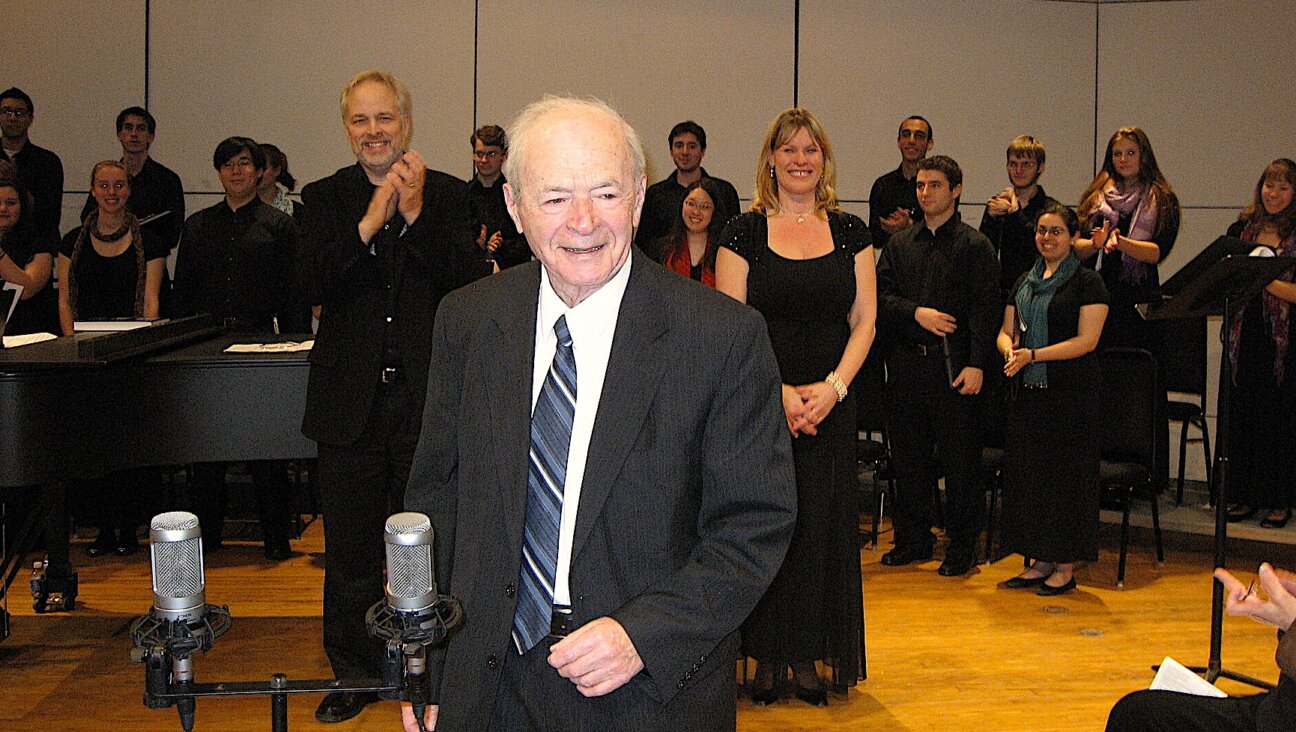A Yemenite Jewish Woman Wonders How ‘White’ She Really Is

Yemenite Jewish women in Rehovot, Israel. Image by Getty Images
Ayala Tiefenbrunn’s recent Hevria personal essay, “The White Girl In The Dunkin Donuts,” is worth reading, especially if you’ve been trying to make sense of all the Jews-and-whiteness conversations that have popped up ever since white nationalists emerged from the American woodwork to offer their opinion on the matter.
Tiefenbrunn, a Yemenite Jew who wears a “regal wrap,” a traditional type of head covering for a married Yemenite Jewish woman, describes her discomfort with having been yelled at by a stranger for being “white.” Specifically, she tells the story of an unhinged-sounding “random stranger” (race and gender not specified)* screaming at her in a Dunkin’ Donuts, telling her that she’s “a ‘white person who I ain’t never gonna f***ing bow down to you ever.’” We learn later in the piece that the stranger “kept yelling at me, ‘the white people’” and told her they “wanted [her] to die.” The incident in question is the impetus for a personal essay in which Tiefenbrunn contemplates her whiteness or lack thereof. She does so largely in the second person, addressing the Dunkin’ Donuts incident-instigator.
This approach has certain drawbacks. As a rule, it’s best not to read political significance in the things people utter or yell at strangers in public spaces, particularly where something like a death wish is involved. Was the Dunkin’ Donuts encounter a protest against systemic racism, and targeting a woman who passes as white? Not impossible, but hardly the only possibility. Also a possibility: a mental-health crisis. Or some combination! We don’t know, and from her description, Tiefenbrunn couldn’t know, either.
And yet the piece, which addresses the doughnut-shop provocateur, rests on an even more specific assumption: “I wondered if you were angry because to you, what I call a mitpachat, a part of my heritage, is a sign of me trying to be culturally appropriative.” It seems a stretch to project an accusation of cultural appropriation onto someone who has not accused you of this.
A part of me is tempted to dismiss the essay as feelings-projection journalism, that is, the thing where a writer will invent a whole backstory – opinions and motivations – onto someone they don’t know, based on scant evidence. But I’m not sure what approach other than feelings journalism works for addressing the ever-elusive topic of Jews and whiteness.
Tiefenbrunn explains that her family are Yemenite Jews, without any European origin, and that she’s faced discrimination both as a Jew and within the Jewish community, as someone considered less white than Ashkenazi Jews. For these reasons, a whiteness accusation doesn’t seem to fit. And yet, she notes, her physical appearance tells a different story: “And yeah, my skin is white. White like the snow of the Alps.” In other words, her experience is hardly an uncomplicated one of whiteness, and yet, in mainstream society, that’s what she projects: “[T]o everyone else I’m just the white girl in the Dunkin Donuts. And that’s all the world wants me to be.”
Much of this is a familiar conversation in Jewish circles, where mostly-white-looking, mostly-Ashkenazi** Jews grapple with what it means to benefit in some ways from whiteness, while also suffering (a lot, this past week or so) from anti-Semitism. There’s also some (limited) overlap with Tal Fortgang’s viral 2014 essay about having his white privilege checked at Princeton, a charge he attempted to refute by mentioning that his family had been in the Holocaust (but not, crucially, by a claim that he himself, in 2014, was anything other than white).
The twist here is, well, the Yemenite-style mitpachat, the regal wrap. Tiefenbrunn hasn’t made some Rachel Dolezal-esque to identify as a person of color. By dressing in the cultural manner of her own culture, she imagines that she comes across as somehow inauthentic. At the margins, whiteness isn’t a static fact, but rather an impossible-to-disentangle mix of how a person identifies and how they’re identified by others. And knowing how others see us — whiteness-wise or otherwise — will inevitably involve some projection, some speculation.
Tiefenbrunn’s essay isn’t an answer to the question of whether she or any other pale-skinned Jew is white. But it’s a fascinating glimpse at where these conversations are, in the US, at a very particular moment in time.
*A social-media description of the piece reads, “She yelled at me for appropriating her headwear,” details that are unfortunately absent from the piece itself. It’s less of a leap – if a troubling leap all the same – to assume a black woman in a head-wrap herself was calling out cultural appropriation than if this had been, I don’t know, a hatless Korean-American man.
**Not that all Ashkenazi Jews look white! And as Tiefenbrunn’s account suggests, some Yemenite Jews do.
Phoebe Maltz Bovy edits the Sisterhood, and can be reached at [email protected]. Her book, The Perils of “Privilege”, will be published by St. Martin’s Press in March 2017.
















